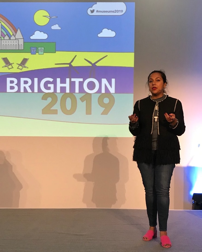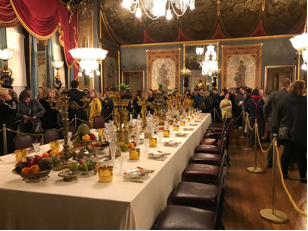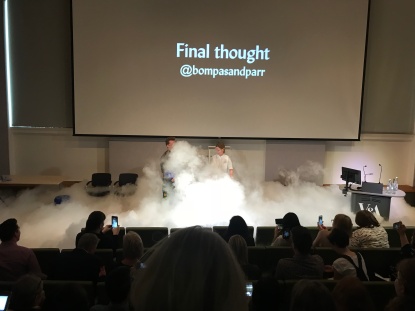Keynotes
Arriving at the Museums Association Conference was exciting; I’ve never seen as many museums people in one place. Subhadra Das opened the conference inspiring us all to be activist and to challenge Empirical ways of running museums. The theme of Sustainable and Ethical Museums in a Globalised World echoed throughout the key-note speeches and used examples of good practice to help inform participants of the activism that needs to take place so change can be made.

- Subhadra Das, Conference Host
Indeed topics were wide and varied covering subjects such as human rights, ethics being at the heart of working for public benefit, the de-colonisation of collections, and climate/ecological emergency. The main message being that museums are not neutral and big issues should not be fudged.
Museums and Their Communities
I enjoyed, Giving up the power: producing community driven content seminar, detailing work relevant to all museums their communities. In this case allowing the people using museums to drive the content they want to see in their own way. Bristol City Council team, using an expert panel representative of the black communities in the city, produced a series of stories from slavery to bus boycotts and carnivals. Their work is live on their website helping to change perceptions of an important community in Bristol’s history.
Following the community theme I found the Community Curation discussion inspiring. The panellists are all involved in community led museums based on minority communities such as Trans people, black and queer people, the homeless and topics no one talks about, in this case vaginas. All of these museums were formed from activism, a need to tell stories and encourage varied representations of difficult issues.
All of the museums are not afraid of contemporary, contentious subjects and subsequently attract young visitors wanting to find out more, a difficult audience to engage with. By connecting with what people find important these new museums are able to represent people. We are all human.
Local Museums for Future Generations
In Wales a Wellbeing for Futures Generations Act was passed in 2015 and requires public bodies in Wales to think about the long-term impact of their decisions, to work better with people, communities and each other, and to prevent persistent problems such as poverty, health inequalities and climate change. All are topics which are at the heart of museums in the UK and can create long lasting positive change.
Welsh museums are incorporating the act into their work and have found they are a relevant part of their public sector by implementing positive change in multiple ways. Museums have accessed funding from the Happy Museum to start projects where artists work with people with mental health problems to produce goods for their shops. The project was based in the woods and they made objects inspired by wooden museum objects. This took participants out of their natural habitat where they experienced peace, quiet, nature, colour and making. Ecological projects improved wildlife through planting and placing boxes for birds and squirrels. Lastly museums became places to share memories through reminiscence, memory boxes and dementia friends training.
Last Words

Finally I have to say it wasn’t all work and no play. What could beat the opulent and crazy, chinoiserie décor in Brighton Pavilion for a few drinks with friends?
This is just a snapshot of what goes on at the conference. Thank you to the MA for hosting a well-organised, inspiring and educational conference. Lastly without the generosity of MDNW I would not have been able to go so I would like to pass on my gratitude to you.
Blog by Gillian Berry, Deputy Manager and Curator, Haworth Art Gallery, Accrington

